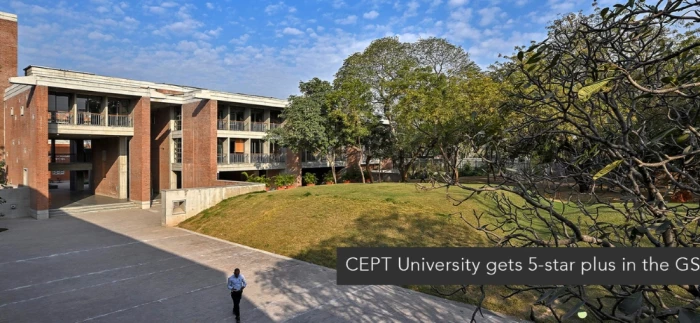Centre for Environmental Planning and Technology
- 28 Jun 2025
- 12 Comments
- university
About the University
CEPT University, located in Ahmedabad, Gujarat, is one of India’s most prestigious academic institutions dedicated to architecture, planning, design, and technology. Established in 1962, CEPT started as the School of Architecture under the aegis of Ahmedabad Education Society. It later evolved into an independent university under the CEPT University Act of 2005, passed by the Government of Gujarat.
CEPT has built a strong reputation for academic rigor, practical design-oriented education, and interdisciplinary learning. The campus is known for its open spaces, collaborative atmosphere, and modern studios that encourage creativity and critical thinking.
The university actively contributes to national and international policy-making in the areas of urban development, housing, environmental planning, and infrastructure design. Many of its alumni are leading architects, planners, and urban designers across the globe.
Affiliation
CEPT University is a state private university recognized by the University Grants Commission (UGC), Government of India. It was established under the CEPT University Act, 2005, passed by the Gujarat State Legislative Assembly.
Address
CEPT University
Kasturbhai Lalbhai Campus
University Road, Navrangpura
Ahmedabad – 380009
Gujarat, India
Website: www.cept.ac.in
Academic Schools and Courses Offered
CEPT University consists of five main schools offering undergraduate, postgraduate, and doctoral programs:
1. Faculty of Architecture
-
Bachelor of Architecture (B.Arch)
-
Master of Architecture (M.Arch)
-
Master of Landscape Architecture
2. Faculty of Planning
-
Bachelor of Urban Planning
-
Master of Urban and Regional Planning
-
Master of Urban Transport Systems
-
Master in Housing
-
Master in Environmental Planning
3. Faculty of Design
-
Bachelor of Interior Design
-
Master of Interior Architecture and Design
-
Master in Furniture Design
4. Faculty of Technology
-
Bachelor of Construction Technology
-
Master of Structural Engineering Design
-
Master of Infrastructure Engineering Design
5. Faculty of Management
-
Master of Urban Management
Additionally, CEPT offers doctoral programs and research initiatives under its CEPT Research and Development Foundation (CRDF).
Campus Life and Facilities
CEPT’s campus is designed as a model of sustainable, community-driven development. The learning environment is open, participatory, and deeply integrated with real-world experiences. Students engage in live projects, field visits, exchange programs, exhibitions, and international workshops. The library, workshops, design studios, digital labs, and FabLab serve as the creative backbone for students across disciplines.



Lorem ipsum dolor sit amet, consectetur adipiscing elit. Nam viverra euismod odio, gravida pellentesque urna varius vitae, gravida pellentesque urna varius vitae. Lorem ipsum dolor sit amet, consectetur adipiscing elit.
Dec 6, 2017
ReplyLorem ipsum dolor sit amet, consectetur adipiscing elit. Nam viverra euismod odio, gravida pellentesque urna varius vitae, gravida pellentesque urna varius vitae.
Dec 6, 2017
ReplyLorem ipsum dolor sit amet, consectetur adipiscing elit. Nam viverra euismod odio, gravida pellentesque urna varius vitae, gravida pellentesque urna varius vitae.
December 7, 2017
ReplyLorem ipsum dolor sit amet, consectetur adipiscing elit.
December 11, 2017
Lorem ipsum dolor sit amet, consectetur adipiscing elit.
December 13, 2017
Reply